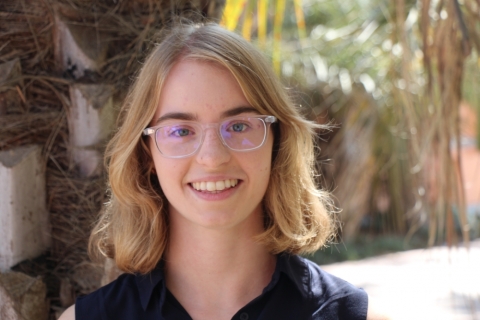
Date:
Location:
Speaker:
Title: Guiding Non-equilibrium Microstructure Formation in Coacervates and Polymer Hydrogels
Abstract
Coacervates are a class of polyelectrolyte-based soft materials that have been engineered for applications across food science, consumer products, healthcare, and oil recovery. Due to the complex interactions between numerous components that contribute to their material properties, coacervate behavior is chiefly understood at equilibrium. However, functionality in their varied applications often depends on the coacervate remaining dispersed as droplets, coating an interface, releasing cargo, or in general acting out-of-equilibrium. In this work, we investigate the formation and destabilization of non-equilibrium micron-scale coacervate structures to inform the engineering of novel coacervate-based materials.
In a model system of poly(acrylic acid sodium salt) (PAA) and poly(allylamine hydrochloride) (PAH) in water, we probe the influence of mixing flows on coacervate coarsening and morphology. Leveraging a combination of microfluidics and other mixing techniques, we find that flow conditions can toggle formation of aggregates or "precipitates" even in coacervates with liquid-dominant rheology at equilibrium. We also discover and analyze interfacial relaxation in these aggregates. These observations suggest that the details of mixing flow can provide non-equilibrium structural control of coacervates orthogonally to structure-property design.
Inspired by this concept, we demonstrate protocell-like core-shell coacervate droplets that form spontaneously when the macroions are mixed slowly. This all-water, high internal interface double emulsion (DE) system remains metastable without surfactant. Using image classification machine learning, we examine the effect of various mixing parameters on the formation propensity of these DEs. We rationalize an unusual mechanism for their formation and show that the viscoelasticity of the coacervate shell, and its high viscosity contrast with the dilute core, enables their surfactant-free stabilization.
Finally, we develop a kinetic model for spinodal decomposition in charged polymer solutions. This coacervate phase field model is derived for implicit salt in a mean field with Gaussian electrostatic fluctuations. One distinction from the neutral polymer systems explored in previous studies is that droplet breakup frequently occurs well before compositional equilibrium is achieved. We discuss the model results in the context of aberrant phase separation behaviors such as DE formation, and the possibility of forming novel structures like bicontinuous coacervates in experimental systems.
Overall, this work establishes several fundamental principles necessary to control non-equilibrium microstructure formation in coacervate materials, and ultimately to predict and manipulate coacervate behavior away from equilibrium.



